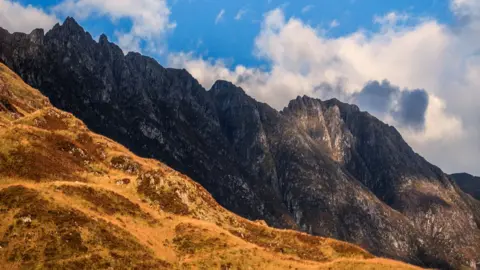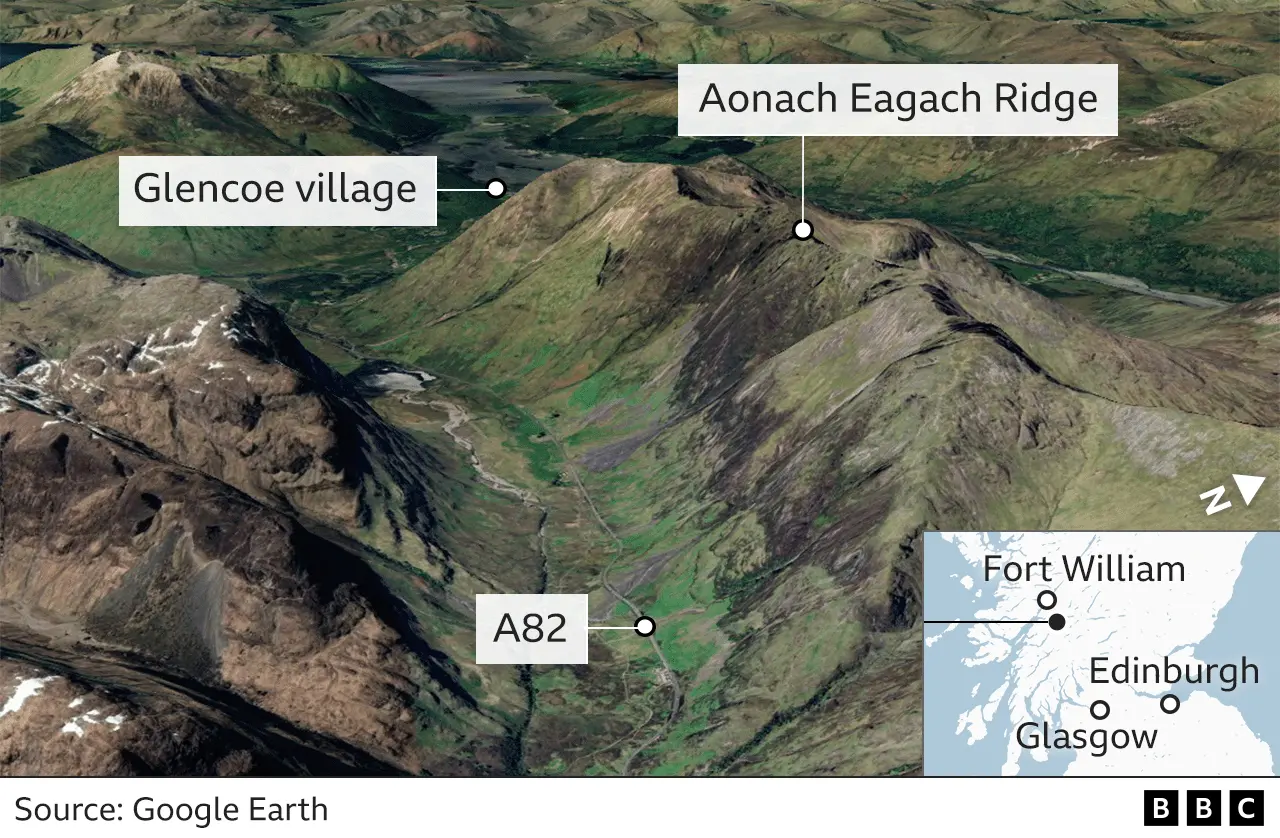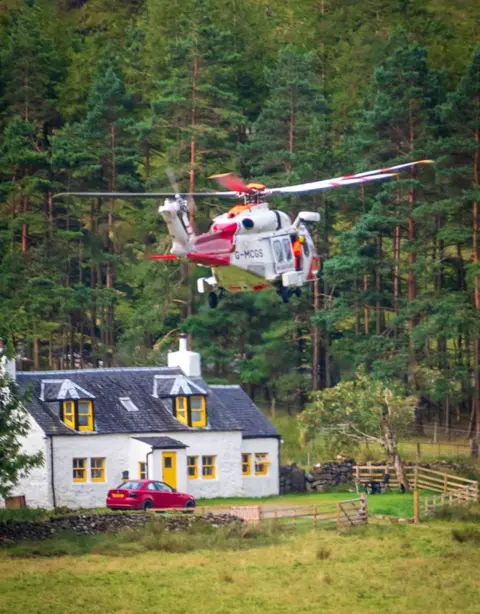What is known about Glen Coe's Aonach Eagach ridge?
 Getty Images
Getty ImagesGlen Coe's Aonach Eagach, the scene of three fatalities at the weekend, is a mountain familiar to most climbers in Scotland.
It is a long ridge above Glen Coe with a series of summits, the highest being 967m (3,172ft) Sgòrr nam Fiannaidh.
Glencoe Mountain Rescue Team leader Brian Bathurst said it was a popular route, and most people traversed it safely.
He said the weekend had seen a "very tragic incident".
Speaking to the BBC Radio Scotland's Drivetime programme, Mr Bathurst said: "Our thoughts are with all the family and friends. It has had an impact on the local climbing community, and further afield."
Aonach Eagach attracts climbers due to what Mr Bathurst described as "steep, exciting scrambles". Scramble is a mountaineering term meaning the use of hands to help keep balance on difficult terrain.
He added: "The weather is changeable and it certainly can be misty and wet. A lot of the rock is also worn away so it is slippery when wet.
"The ridge does not offer any safe exits so once you are committed you have to either carry on or go back the way you came.
"But it is a popular route and thankfully the majority of people get across safely."

Writer and climber Dan Bailey said for those unfamiliar with the terrain, Aonach Eagach is like the apex of a giant roof but looks like the blade of a saw.
At its narrowest point, Aonach Eagach has a row of jagged pinnacles.
Mr Bailey said: "It is on the boundary of hillwalking and climbing, it is not a difficult climb but it would be a very difficult day for a hillwalker.
"At its most exciting point it breaks into a series of sharp rocky pinnacles making progress at that stage more akin to mountaineering or rock climbing."
Mr Bailey, who is editor of UKHillwalking.com and has made climbs of Aonach Eagach, added: "You are using your hands and are climbing up and over those pinnacles.
"It is a spectacular and uncompromising location."
Mr Bailey said in summer the ridge was usually tackled without the aid of ropes, but would not speculate on what had happened at the weekend.
He said the deaths of two men and a woman was a shocking and dreadful accident, adding he hoped their families would be given space and privacy at a very difficult time.
 Stephen Gillespie
Stephen GillespieDavid Whalley, a veteran mountaineer and former RAF mountain rescue team leader known in the climbing community by his nickname "Heavy", said conditions could change quickly on Aonach Eagach.
He told BBC radio's Good Morning Scotland programme: "It is one of the best ridges in Scotland. It's a wonderful thing and I have done it quite a few times, and done quite a few rescues on it.
"There are a few tricky bits, with greasy rocks. The weather is always changing - one minute it is clear and the next the mist is down.
"The big problem is if it all goes wrong there are very few places to get off, so you have to keep going or go back the way you came."
Mr Whalley added: "We mustn't forget we are talking about people and grief going on in [families'] lives."
"Mountaineering is wonderful but it is a risk sport and we all live with that when we are out in the mountains."
What does the name mean?
The name Aonach Eagach means "notched ridge", a refence to its jagged, rocky terrain.
Traversing - crossing - it can take up to nine hours to complete, according to mountaineering guides.
The ridge is popular with keen and experienced climbers and many traverse Aonach Eagach safely every year.
But previous deaths in the area have included a 63-year-old woman in September 2014 and a 44-year-old man in July 2016.
Last September, the body of Alan Taylor, from Dundee, was found in a gully near the ridge. The 57-year-old had been missing since September 2021.
